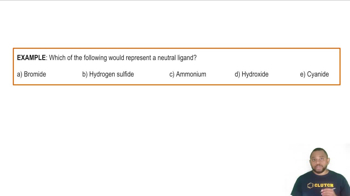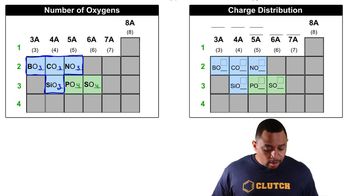Here are the essential concepts you must grasp in order to answer the question correctly.
Ligands
Ligands are ions or molecules that can donate a pair of electrons to a central metal atom to form a coordination complex. They can be classified based on their charge and polarity, which significantly influences their ability to bond with metal ions. Understanding the nature of ligands is crucial for predicting their reactivity and stability in coordination chemistry.
Recommended video:
Charge of Ions
The charge of an ion plays a critical role in its ability to act as a ligand. Negatively charged ions (anions) are generally more effective ligands than positively charged ions (cations) because they can easily donate electron pairs to metal centers. This electron donation is essential for the formation of stable coordination complexes.
Recommended video:
Polarity of Molecules
The polarity of a molecule affects its solubility and interaction with metal ions. Polar molecules, which have a significant dipole moment, are more likely to interact with charged metal ions due to their ability to stabilize ionic interactions. In contrast, nonpolar molecules lack this ability, making them less effective as ligands in coordination chemistry.
Recommended video:

 Verified step by step guidance
Verified step by step guidance

